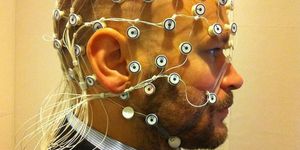Gene Profiling Breaks Down Decisions Made in the Immune System
How do lymphocytes make the decision to launch an attack or act otherwise? Researchers from the Weizmann Institute of Science were interested in answering this question and more, using a combination of two technologies to answer questions long asked about how cells send signals and make decisions.
The new combination of technologies can manipulate and understand cause and effect with the upmost precision and speed. “A single experiment with this method may be equal to thousands of experiments conducted using previous approaches,” the scientists said.
Researchers started with CRISPR gene editing technology, which was first discovered in bacteria. The microbes were found to be using it for their own protection against viruses, essentially “cutting and pasting” viral DNA into their own genomes so they would recognize their foes when they encountered them more than once.
Study leader Ido Amit, PhD and his lab have been working on the development of single-cell RNA sequencing, the second piece to the puzzle. This form of genomic profiling involves sequencing messenger RNA molecules from each individual cell. Messenger RNA sequences provide clues as to the cell’s activity in a certain tissue. Amit and his lab combined their RNA sequencing technology with known CRISPR techniques to discover unique cell functions in groups of cells, a combination with Amit called “a new molecular microscope.”
The discovery of novel cell variations showed Amid and his team how and why immune cells of the same type sometimes function differently depending on what tissue they were found in. The new technology allowed the team of scientists to make changes as well as observations, with one gene change able to make a monumental difference in a cell’s function.
“By linking cells with similar behaviors, something like the algorithms Netflix uses to group people who like similar movies, we were able to identify previously unrated functions for many genes,” said leading author Assaf Weiner, who designed the algorithms used in their studies.
They tested their technology in mice immune cells, studying their activity as they dealt with pathogenic invasions. Like looking under the hood of a car to understand how the engine works, scientists could observe immune cell activity and contemplate making changes to either modify or improve the cells’ activity.
Based on their findings and past studies, Amit and his team believed that neither CRISPR nor single-cell RNA sequencing on its own could have produced the results that they did in their study.
The findings from their study were published in the journal Cell.
Source: Weizmann Institute of Science









